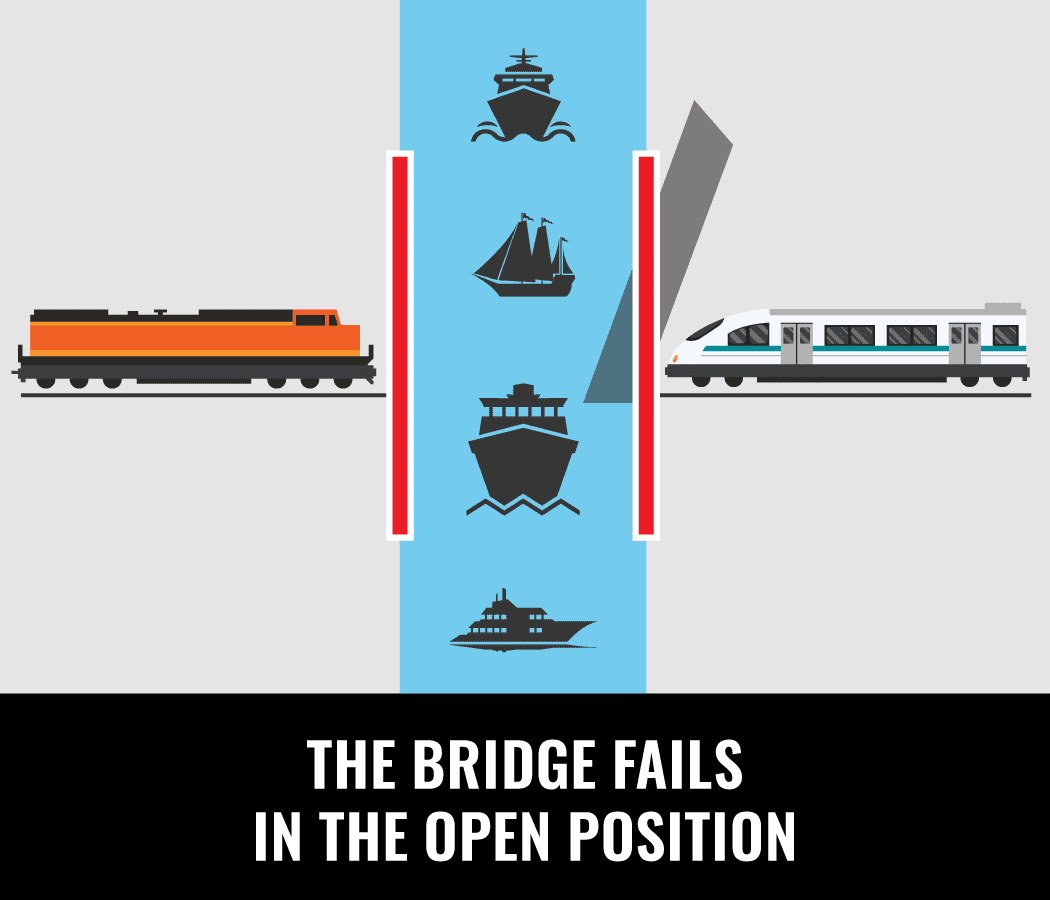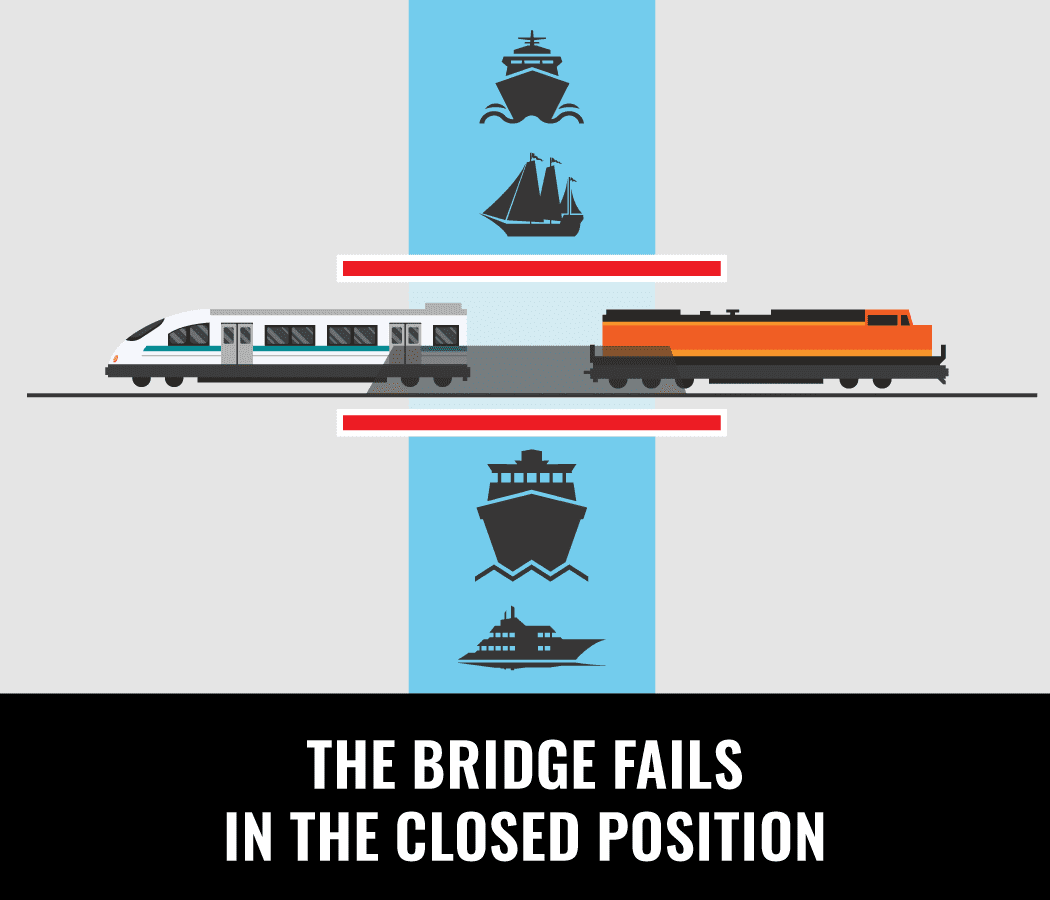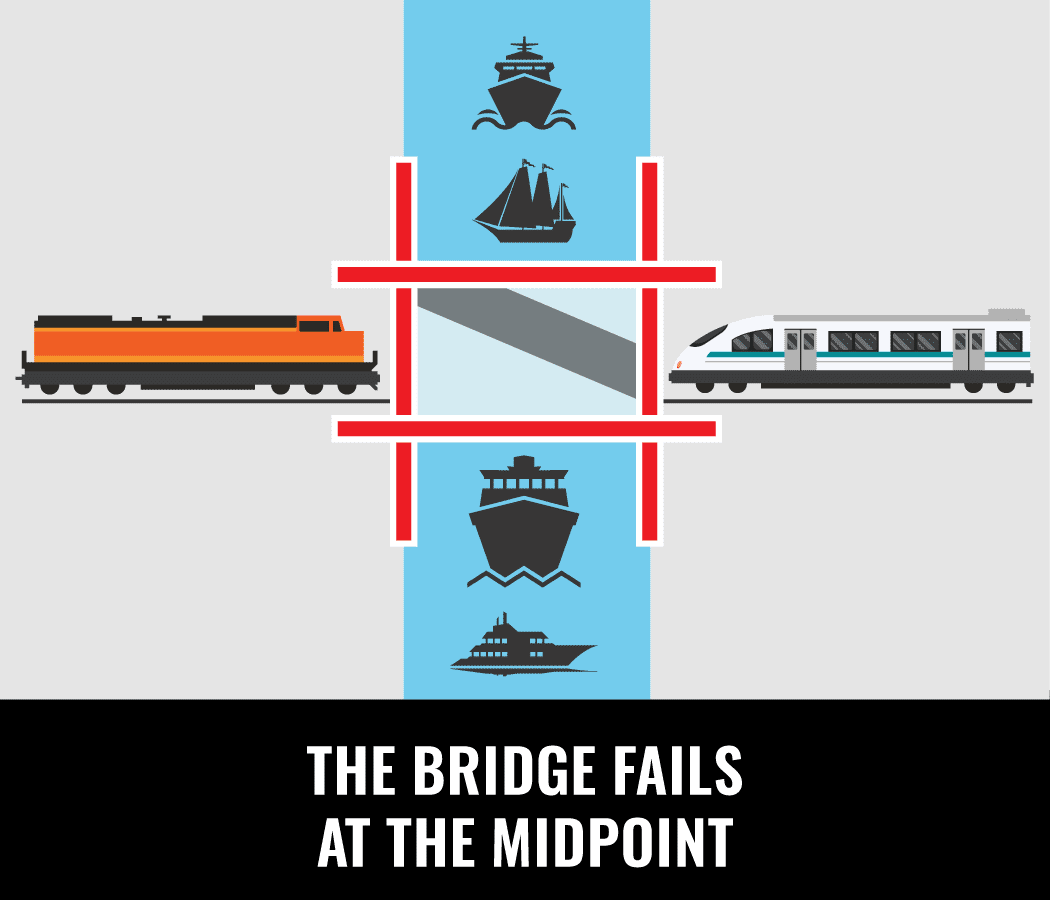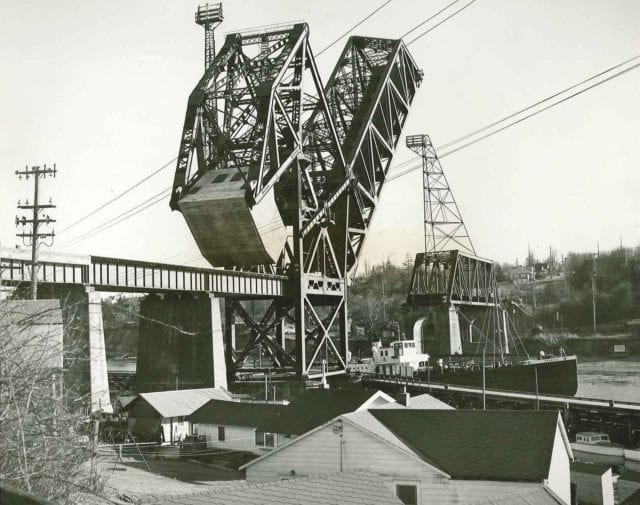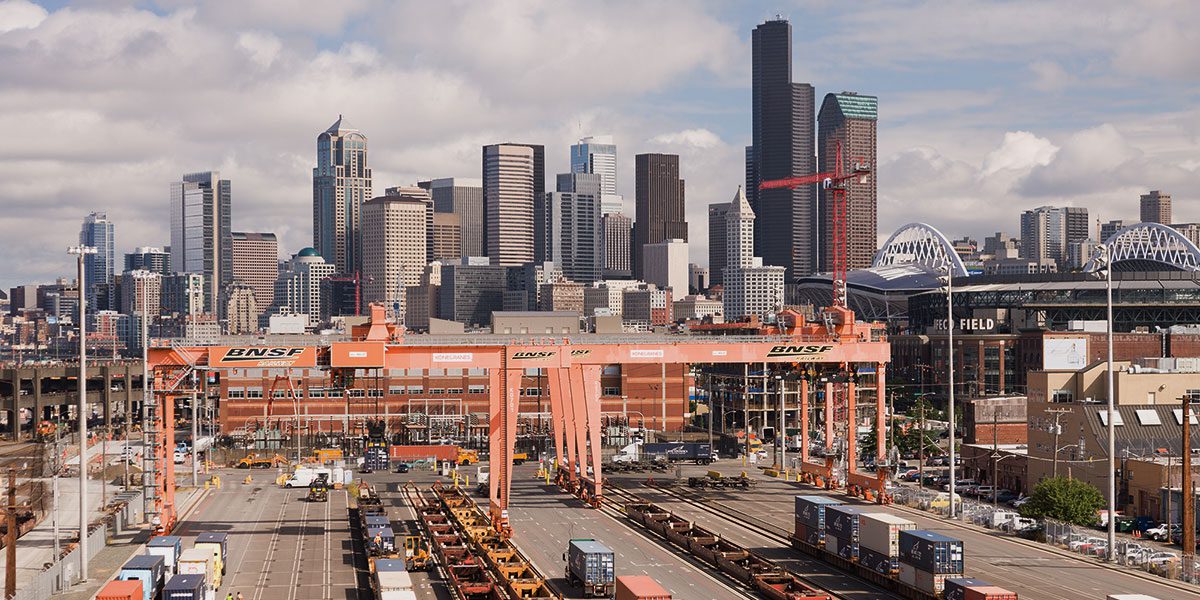- Great Northern Railroad authorized construction of the jackknife-style bridge in 1912.
- The bridge spans Salmon Bay and connects the Magnolia/Interbay and Ballard neighborhoods in Seattle, Washington.
- For over 100 years, the bridge has been an essential component of commercial and recreational traffic in the Pacific Northwest with approximately 30 to 40 trains—including Amtrak and Sounder passenger trains—crossing the bridge each day.
Since bridge completion, frequent maintenance and upgrades have ensured its safe and efficient use.
Major updates include:
- 1948 – Counterweight rebuilt
- 1980 – Main operating strut replaced
- 1995 – Main drive machinery and motors replaced
- 2010 – Counterweight trunnion bearings replaced
- 2013 – Most recent replacement of movable joints
- Timber tie deck replaced multiple times over the years
- Common steel maintenance such as replacing stringers and repairing corroded members has occurred throughout the life of the bridge
- Operator house has been continuously updated and maintained


